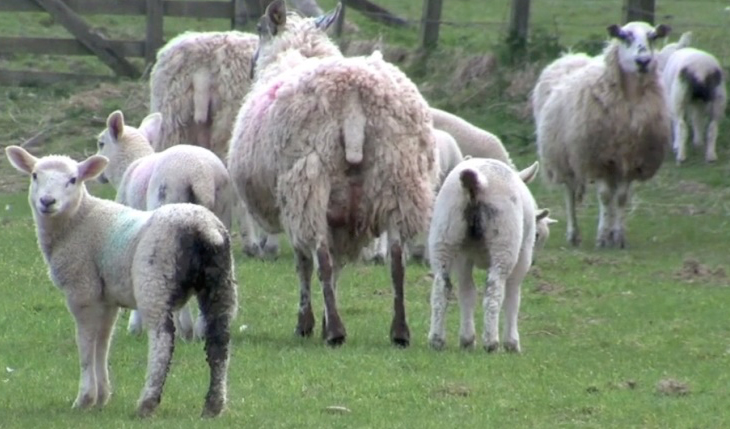
Livestock farmers must plan their parasite control and pasture use now to reduce the risk of losses due to internal parasites in the coming year says the March NADIS Parasite Forecast, sponsored by Merial Animal Health.
Sioned Timothy, Ruminant Veterinary Advisor for Merial Animal Health says: “Preventing serious parasite burdens and the resulting production losses in both sheep and cattle during 2015 requires a strategic approach to wormer use and pasture management. Farmers should plan ahead, identifying ‘safe grazing’, ground that has been re-seeded or was not grazed by sheep during the previous year, and utilise it strategically for ewes and lambs at turnout.”
Planning ahead to minimise future contamination of pastures is crucial to preventing disease in lambs this spring. A strategic approach should be adopted to minimise reliance on wormers and the threat posed by parasites to grazing livestock.
Farmers should refer to SCOPS recommendations to develop a strategy to manage the increase in faecal egg output that occurs in ewes around lambing as a result of decreased immunity. Leaving around 10% of fit, well-conditioned ewes untreated is a practical approach, and allows low numbers of susceptible parasites to be carried over onto the safe grazing and avoid undue selection for resistance.
The risk of lamb deaths and production losses from nematodirosis increases considerably in late spring and early summer. The risk is highest when warmer weather rapidly follows a late cold snap. Grazing lambs (six to twelve weeks old) are most likely to be infected. Triplets, fostered, or lambs on young or older ewes are at higher risk, as are those likely to be challenges by coccidiosis.
Safe grazing does not pose a risk of infection. Plan ahead and prioritise safe grazing for lambs, particularly those that may be more susceptible to infection as this will minimise the risk of disease. Lambs turned out onto contaminated grazing may be at risk of disease once infectious larvae hatch from overwintered nematodirus eggs and farmers should be vigilant for signs of this potentially devastating disease.
SCOPS recommends assessing the risk for individual farms and for groups of animals within the flock, taking into account regionalised disease warnings given by NADIS and on the SCOPS website. If lambs are identified as being as risk, treatment with a Group 1 (white) drench would be suitable. Pooled faecal egg counts (FECs) seven to ten days later will identify whether treatment has been successful.
Following an increase in husk cases in 2014, cattle farmers are being urged to be ‘lungworm aware’. The risk of disease in both youngstock and adult cattle should be assessed and a suitable control strategy developed in conjunction with their vet or SQP.
Lungworm disease is typically seen in grazing cattle from July onwards. Youngstock are most susceptible, but the risk posed to adult cattle should not be overlooked. Adult cattle brought onto infected farms may be particularly vulnerable, depending on previous exposure levels and management techniques.
Sioned says: “Planning a control strategy which carefully balances exposure, immunity and the strategic use of wormers to achieve effective parasite control is key. Vaccination may play a role in this, but must be timely to maximise its benefits.”
Other control strategies suitable for cattle on set-stocked systems include strategically-timed injections and boluses. Persistent, injectable wormers such as those containing ivermectin (Ivomec® Classic injection for cattle) can provide protection from lungworm and parasitic gastroenteritis (gutworm scours) throughout the grazing season.
However, Sioned reminds farmers that any treatments should form part of an integrated parasite control strategy that takes resistance management into account. She says: “Wormers that treat lungworm also treat gutworm. Farmers should discuss the correct approach with their vet or an animal health adviser (Suitably Qualified Person – SQP) at their local stockist.”
